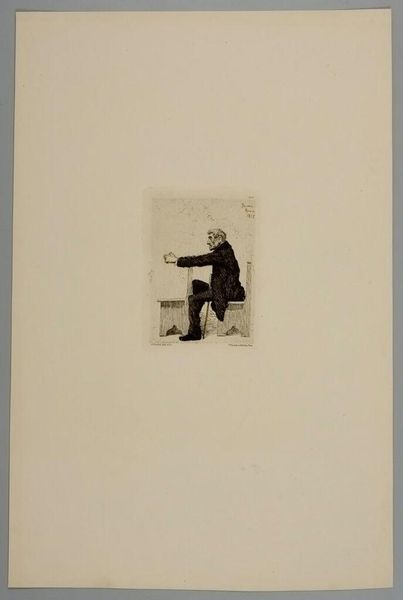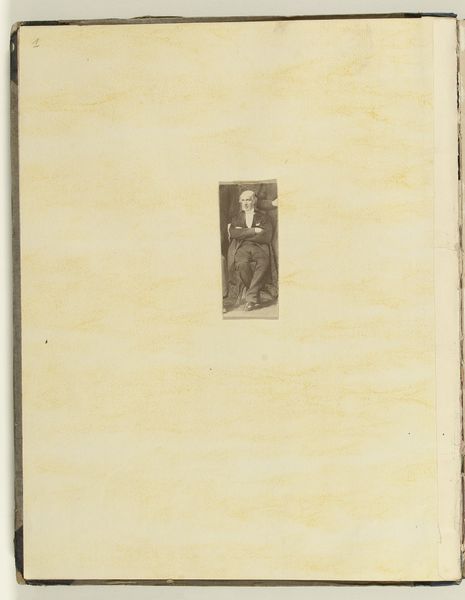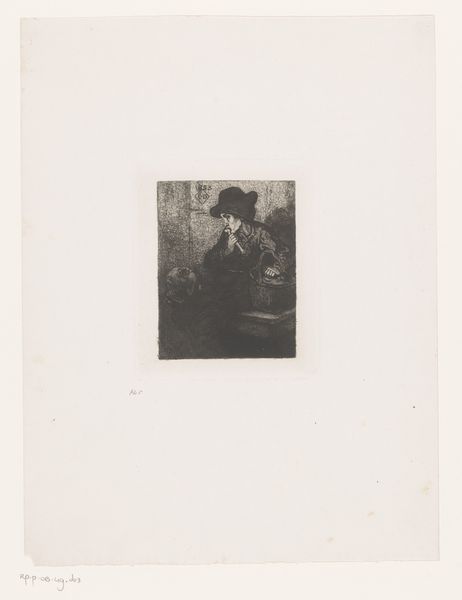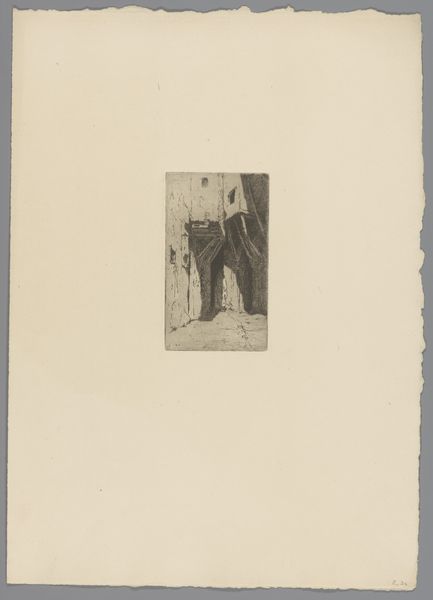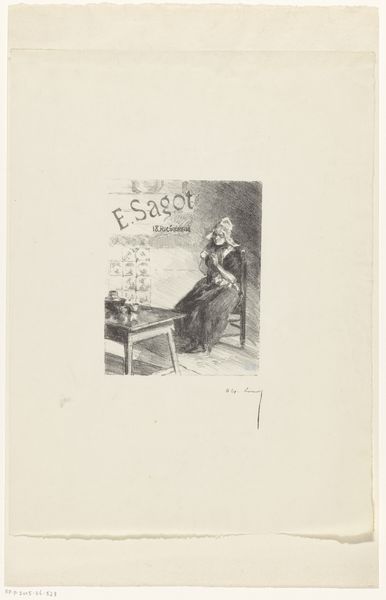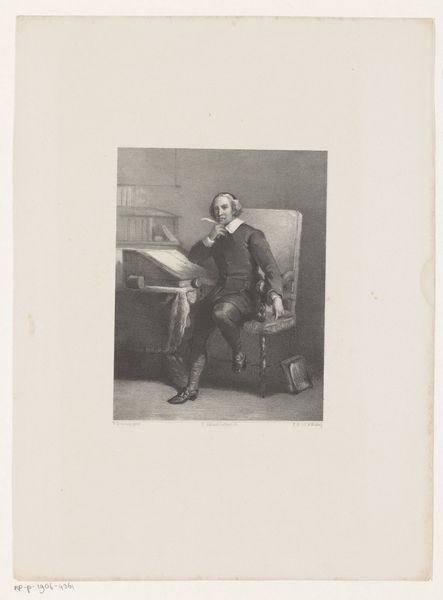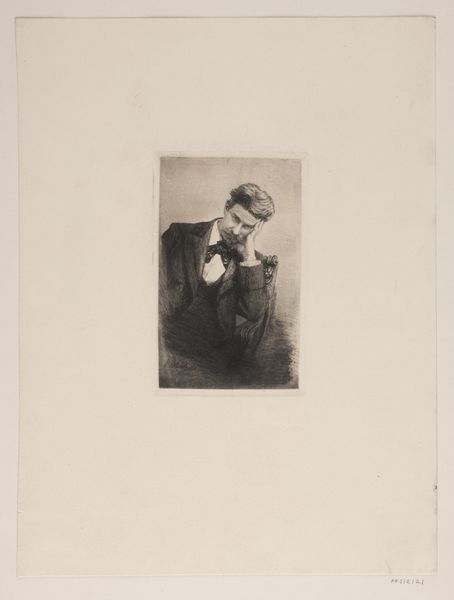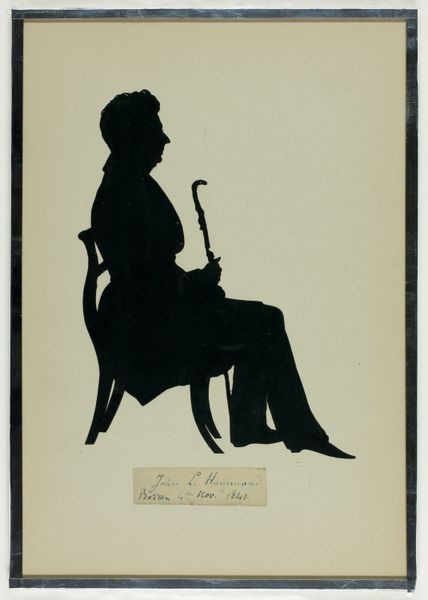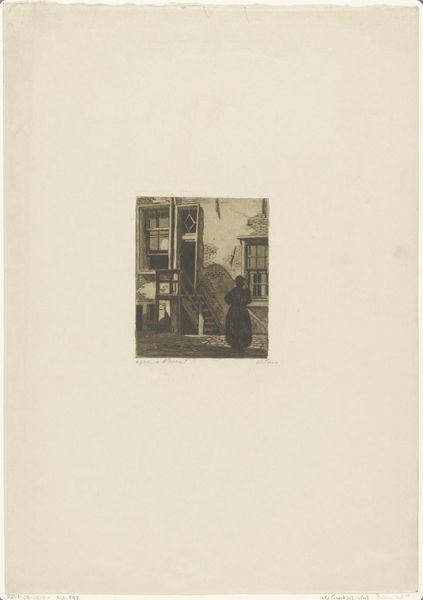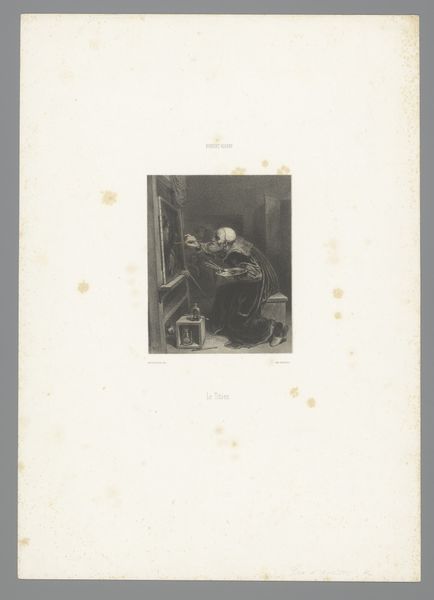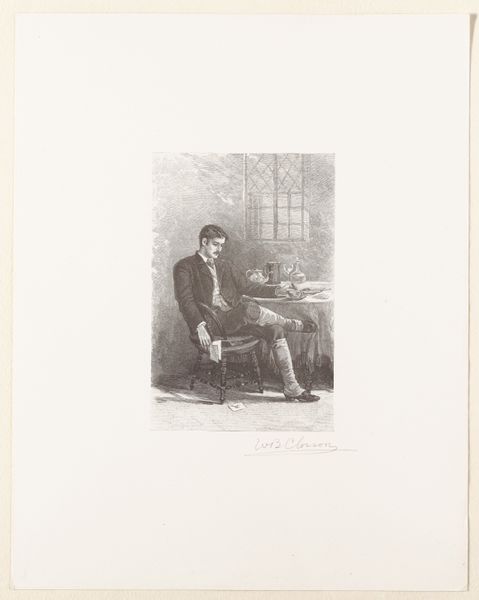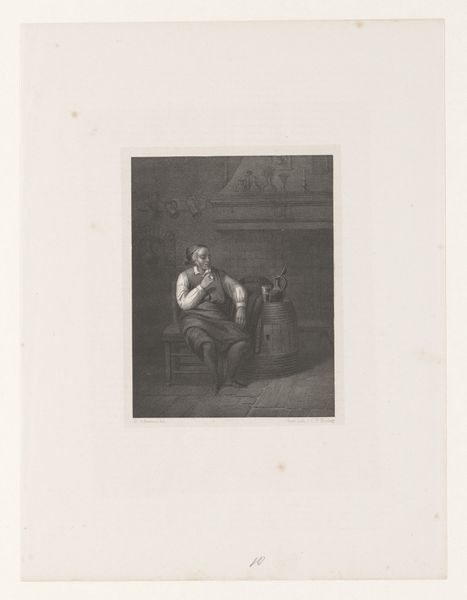
drawing, print, etching, paper
#
portrait
#
drawing
# print
#
silhouette design
#
etching
#
paper
#
genre-painting
#
italian-renaissance
#
italy
#
realism
Dimensions: 120 × 90 mm (plate); 266 × 195 mm (sheet)
Copyright: Public Domain
Curator: Before us we have "Old Man in Church," a captivating etching by Antonio Piccinni, created in 1875. Editor: It’s immediately striking, isn’t it? Such stark simplicity. The way the artist has used such sparse lines to create a really quite potent image of solitude. Curator: Absolutely. The print itself, rendered on paper, speaks volumes about the democratized nature of art production at the time. Etchings allowed for wider distribution and accessibility to art, impacting social perceptions and engaging in popular culture. Editor: The raised, outstretched hand. The figure appears to be either reaching, pleading, or perhaps just in a moment of contemplative openness before a higher power. The silhouetted form adds weight; it emphasizes humility against grand design. Curator: It’s the composition, too. Consider the economy of means. He's made such evocative marks on what must have been a copper plate. And let's consider the physical labor of etching, using acids to carve into metal to facilitate printmaking. The distribution process relies entirely on consumption to survive! Editor: Yes! And the bench where the old man is seated, also defined by its simple construction, looks almost medieval. It hints to something older, as does the architectural detail in the back wall. These evoke tradition. A church connects with timeless beliefs, doesn’t it? The silhouette form helps bridge our culture across a span of history through its iconography. Curator: To push against that notion though, Antonio was engaging with this medium that could facilitate copies and prints which allowed working class people access to artworks that often were displayed only in museums, galleries and upper-class houses. In order for an artwork like this to exist, every participant relies on the other. Editor: Fair point. The way you described it really brings focus to a sort of cyclical motion throughout our cultural existence—ideas from history are made new again each cycle. Even faith becomes a renewed and repeated tradition as long as the silhouette of hopefulness persists within our psyche. Curator: Exactly. Ultimately it’s this interaction with materials and modes of consumption that make us reconsider the very function of this portrait. Editor: I will walk away contemplating what symbols of reassurance an era chooses to define. Thank you!
Comments
No comments
Be the first to comment and join the conversation on the ultimate creative platform.
